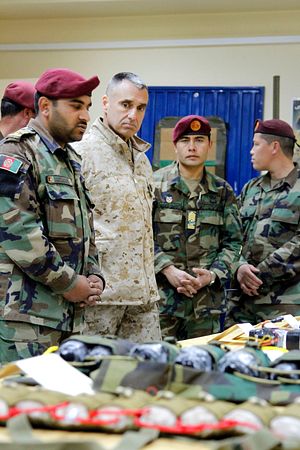Civilian casualties in Afghanistan are still on the rise, according to a UN report. In the first six months of 2015, the UN documented 4,921 civilian casualties (1,592 dead and 3,329 injured). While the total amount of civilian casualties rose only one percent compared to the same period in 2014, it looks like 2015 will be one of the deadliest years for Afghan civilians on record. Since 2009, the UN Assistance Mission in Afghanistan (UNAMA) has recorded 52,653 civilian casualties (19,368 dead and 33,285 injured).
The midyear report, prepared by UNAMA and the UN Human Rights Office, covers January 1, 2015 to June 30, 2015. The report says that civilian casualties in 2015 are set to equal or exceed 2014’s record highs. Another recent report, from TOLOnews, reinforces this projection. The TOLOnews report says that civilian casualties in July were 26 percent higher than June numbers.
There are several interesting trends at play. Of the civilian casualties in the first six months of 2015, 70 percent were caused by anti-government elements and 16 percent by pro-government forces. Most of the remaining casualties are difficult to attribute but occurred in ground engagements between pro-government forces and insurgents. Casualties caused by government forces rose 60 percent over last year, an increase linked, in the report, to an increased number of ground engagements conducted by government forces, and particularly increased use of indirect weapons such as mortars, rockets, and grenades.
While ground engagements and improvised explosive devices remain the leading causes of civilian casualties, the total number of both declined, 19 and 21 percent respectively, when compared to last year. Last year’s high number of grounded engagements and IEDs is largely attributable to the election and runoff, prompting attacks targeting candidates, supporters, and polling stations. The rise in civilian casualties this year comes from a 78 percent increase in suicide and complex attacks by anti-government elements compared to the same period in 2014.
Regionally, the south and east still lead in civilian casualties. Kunduz province, in the northeast, had the highest number of civilian casualties owing to a large Taliban offensive, and government counter-offensive, there from April to June. Nangarhar in the east, Ghazni in the southeast, and Helmand in the south were the next highest.
Perhaps the most dangerous trend for civilians is the apparent fracturing of the Taliban and other anti-government elements. The appearance of groups pledging allegiance to ISIS in Afghanistan over the past year, dissent within the Taliban over peace talks, and other splits have put more civilians in danger, especially those caught between multiple rival groups. The replication of terror tactics–beheadings and civilian executions–inspired by ISIS in Iraq and Syria puts civilians at greater risk.
The UN recommends, first, that the Afghan government “cease firing mortars, rockets and grenades into civilian-populated areas.” The report also recommends that the Afghans disband and disarm local militias and prioritize further capacity development of Afghan security forces. In 2015, NATO’s ISAF morphed into the training and assistance-oriented Operation Resolute Support and the Afghans took over in conducting the war.

































